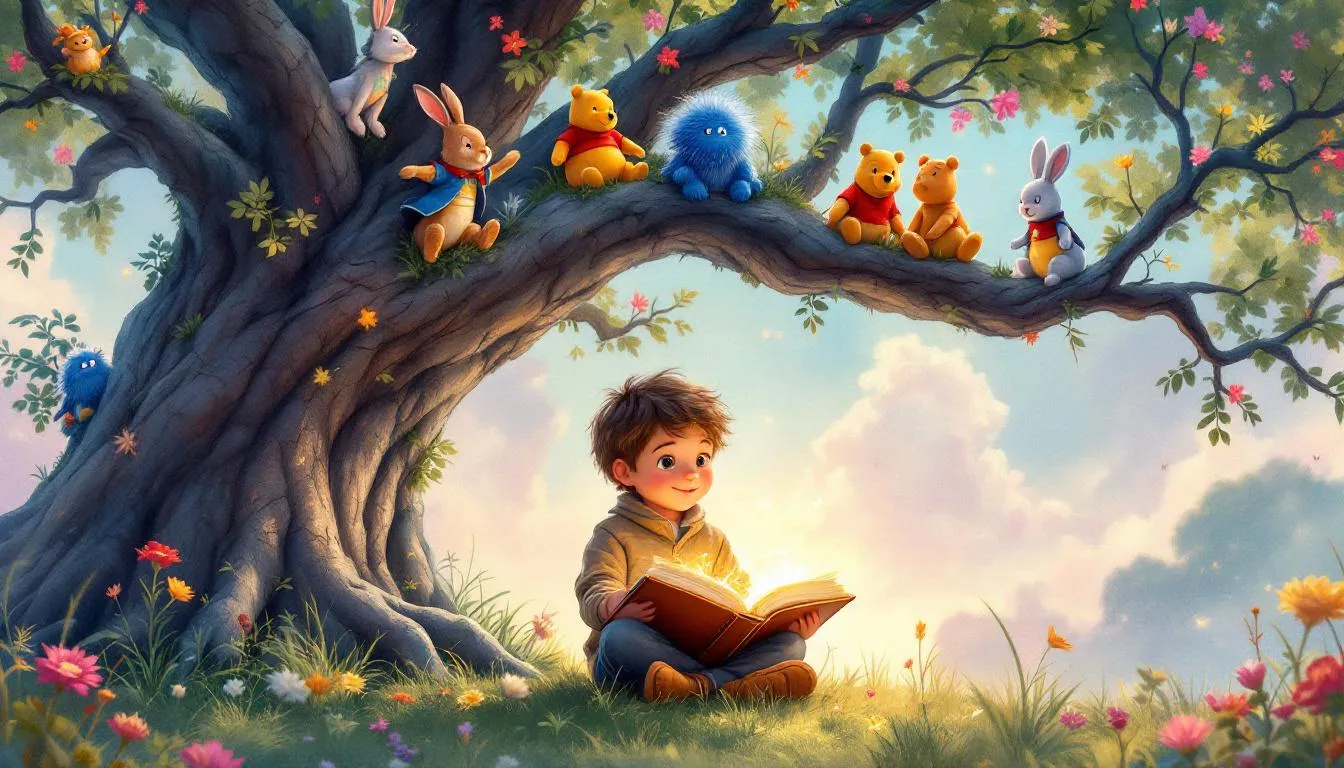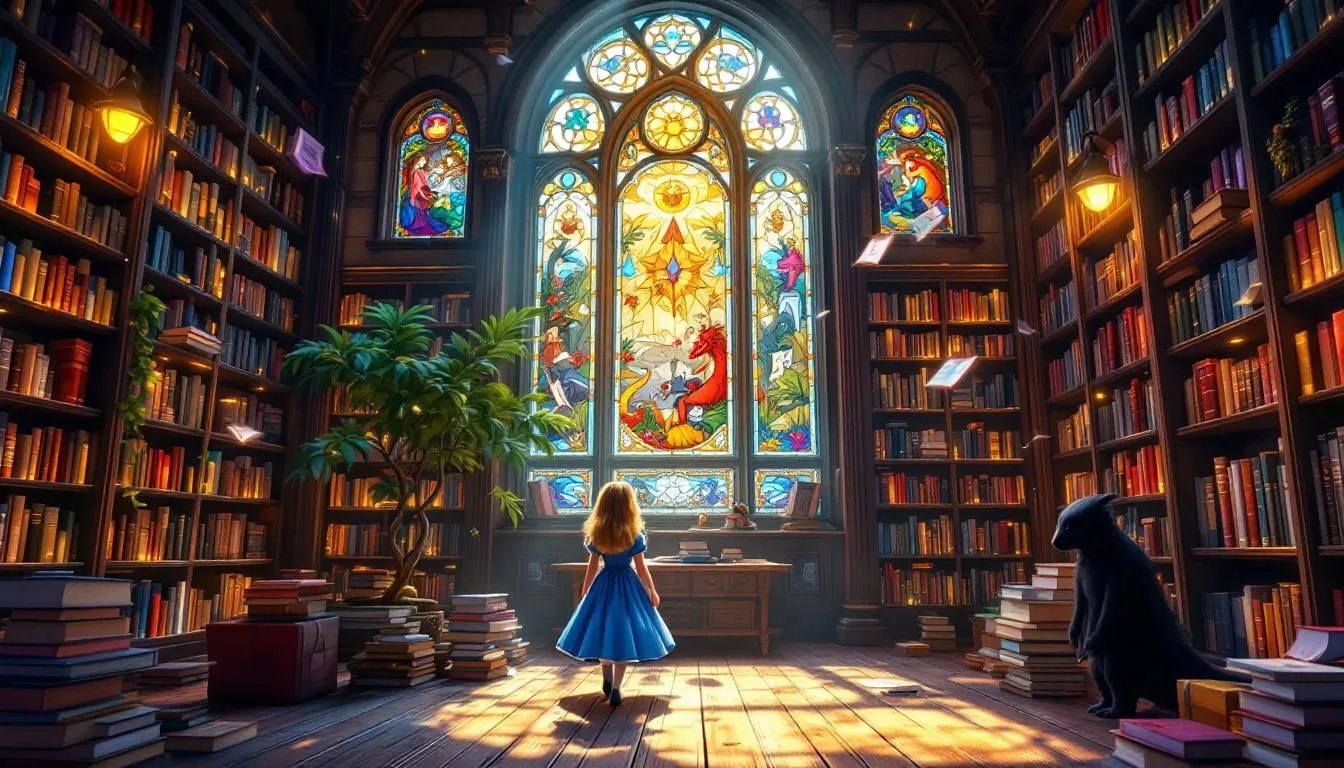Children’s books with timeless designs feature visual elements that remain appealing and relevant across generations. These books often boast illustrations, typography, and color palettes that ignite a child’s imagination and evoke wonder. Timeless designs captivate by consistently evoking curiosity and emotion, ensuring their enduring appeal.
Understanding the elements that contribute to these lasting designs can offer valuable insights into crafting children’s books that endure.
Table of Contents
What Design Elements Make a Children’s Book Timeless?
When we think of children’s books passed down through generations, their vibrant and imaginative designs often come to mind. Let’s explore the key design elements that give these books their timeless appeal.
Use of Color and Illustration
Color can bring a story to life. Bright, vivid illustrations capture young readers’ attention, while softer palettes evoke calm or nostalgia. Consider Where the Wild Things Are by Maurice Sendak; its imaginative illustrations have enchanted children for decades, inviting readers into a world of wild adventures.
Typography and Layout Choices
The presentation of words greatly influences a child’s reading experience. Typography that complements the story’s tone builds a connection. The whimsical font in Dr. Seuss books enhances the playful nature of the stories, making reading fun and engaging. A thoughtfully designed layout ensures text and illustrations work in harmony, maintaining reader interest.
Interactive and Tactile Elements
Interactive features, like lift-the-flap or textured pages, offer a multi-sensory experience. These elements invite children to participate in the story, making the reading experience more engaging and memorable. I recall my kids being fascinated by textured books, returning to them repeatedly.
These design elements captivate the eyes and touch the heart, sparking curiosity and emotion. Let’s explore how these designs achieve such an emotional impact, creating lasting connections with readers.
How Do These Designs Evoke Curiosity and Emotion?
Storytelling is a universal language that transcends age, and children’s books with timeless designs often use visuals to tell their stories. Picture a moment when you opened a book and were greeted with illustrations so vivid they seemed to leap off the page. That’s the power of storytelling through visuals. For instance, the lush landscapes and expressive characters in books like Goodnight Moon draw readers into their world, inviting exploration and imagination without words.
Characters and settings play a crucial role in creating emotional connections. Children relate to characters experiencing emotions similar to their own, making the story personal and engaging. For an even deeper, personalized connection, consider a service like KidTeller, which creates personalized storybooks where your child is the hero, making their adventures uniquely theirs. When I read The Tale of Peter Rabbit to my kids, they were captivated by Peter’s mischievous adventures and the cozy, detailed settings that felt almost touchable. These emotional ties bring kids back to the same stories repeatedly, like meeting an old friend.
An engaging narrative flow is vital to maintaining a child’s interest. Timeless books often guide readers through their pages with a seamless blend of text and illustration, creating a rhythm that feels as natural as a bedtime story told by a loving parent. This flow keeps children turning pages, eager to discover what happens next.
Understanding how these elements work together helps us appreciate why some designs captivate us and how they continue to do so for future generations.
Why Do Some Designs Continue to Captivate Across Generations?
In children’s books, certain designs transcend time, resonating with young and old alike. One reason these designs remain captivating is their use of universal themes and motifs. Stories exploring friendship, adventure, love, and courage speak to the human experience, no matter the era. I remember being enchanted by Winnie-the-Pooh as a child, finding meaning in its simple yet profound themes of friendship and kindness. These motifs are eternal, allowing different generations to find joy in the same tales.
Cultural and historical influences also play a significant role in crafting timeless designs. Books incorporating elements from various cultures or historical contexts offer glimpses into different worlds and times, enriching a child’s understanding of diversity. Take The Story of Ferdinand, which introduces Spanish culture through its illustrations and narrative. Such books entertain and educate, nurturing an appreciation for different perspectives.
Moreover, enduring artistic styles and techniques contribute to a book’s lasting appeal. Classic artistic approaches, whether the intricate linework of Beatrix Potter or the bold, playful strokes of Eric Carle, capture the essence of a story in a manner that remains fresh and engaging. These styles become synonymous with the stories themselves, creating a unique visual identity instantly recognized.
By examining these elements, we gain insights into what makes certain designs timeless. This understanding can guide modern designers seeking to create tomorrow’s classics, ensuring their work captivates future generations.
How Can Modern Designers Learn from Timeless Designs?
Modern designers aiming to create timeless children’s books can learn much from studying successful examples. Consider the beloved The Very Hungry Caterpillar by Eric Carle. Its simple, vibrant illustrations and straightforward, engaging narrative have delighted generations. The book’s design exemplifies how simplicity can be powerful, with its cut-out pages and repetitive, rhythmic storytelling captivating young minds.
Lessons in simplicity and creativity abound in such examples. Successful children’s books often employ uncomplicated designs allowing the story and illustrations to shine. Simplicity can be the canvas for imaginative storytelling. I recall a project with kids where they created their stories using basic shapes and colors, proving that less can indeed be more.
Balancing innovation with tradition is crucial for modern designers. While bringing fresh ideas to the table is important, respecting the foundational elements of classic storytelling is equally vital. Many modern books succeed by innovating within familiar frameworks. Mo Willems, for instance, uses simple language and expressive illustrations in his Elephant & Piggie series, introducing humor and interaction in a fresh and engaging way.
By analyzing these elements, modern designers can craft stories that resonate now and for years to come. This understanding paves the way for creating books cherished and remembered, continuing the legacy of timeless storytelling for future generations.
Key Takeaways
- Timeless children’s book designs resonate emotionally and visually, creating lasting connections with readers.
- Essential design elements include vibrant colors, engaging typography, and interactive features that invite exploration.
- Studying successful past designs offers valuable insights for creating enduring and beloved works.
- Balancing simplicity with creativity is key to capturing young readers’ imagination.
- Embrace universal themes and diverse cultural influences to enrich storytelling.
Remember, the magic of storytelling lies in its ability to create memories and inspire young minds. With these insights, you’re ready to craft the classics of tomorrow!






